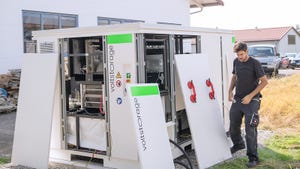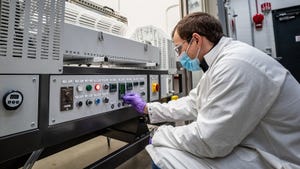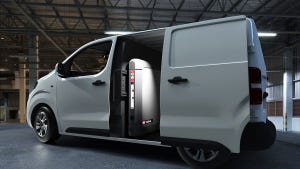Meet Tanker X: World’s First Battery-Powered Tanker
Japanese startup PowerX has released details of the 140-ft, LFP-powered tanker ship, expected to be completed in 2025.
June 7, 2023
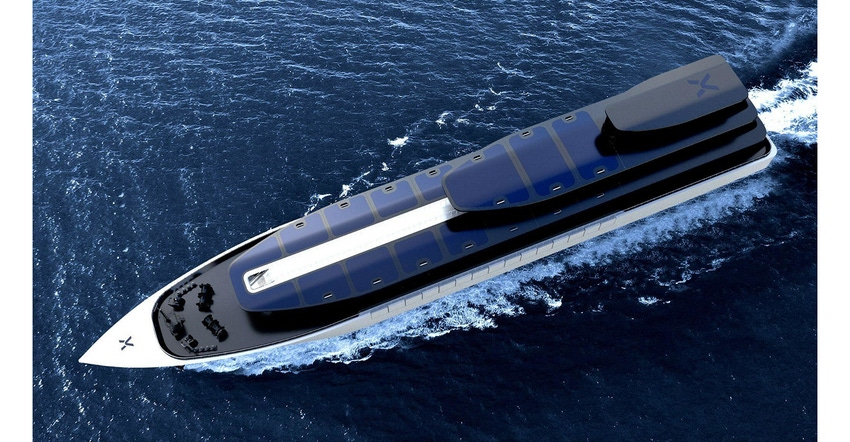
Last March, we at Battery Technology shared a look at some trendestting battery-powered boats; now we'll have to make an addition—a big one: Japanese battery startup, PowerX, Inc. has unveiled the detailed design of the first-ever “Battery Tanker” at the Bariship International Maritime Exhibition held in Imabari City, Ehime Prefecture, Japan. The inaugural ship “X” aims for completion by 2025, with domestic and international field testing planned to commence in 2026.
Furthermore, a new company called Ocean Power Grid Inc. will be established in the third quarter of 2023 to advance the maritime power transmission business utilizing Battery Tankers. This company will own, sell, and operate the battery tankers in Japan and abroad. PowerX is seeking business partners worldwide for this new technology and business endeavor.
PowerX has signed a memorandum of understanding and a Partnership Agreement with Kyushu Electric Power Co., Ltd. and the City of Yokohama to pursue the novel maritime power transmission concept and achieve carbon-neutral ports.
The first Battery Tanker is scheduled for domestic and international field testing starting in 2026. This electric propulsion vessel boasts a length of 459.3 feet (140 m) and will be equipped with 96 containerized marine batteries, providing a total capacity of 241 MWh.
The onboard battery system is based on the company’s proprietary module design, featuring safe and reliable lithium iron phosphate (LFP) battery cells that ensure a lifespan of over 6,000 cycles.
Additionally, the battery system is highly scalable, allowing for the installation of additional batteries to create larger electric transport vessels such as Power Ark 1000 or even larger sizes to meet specific mission requirements.
The system includes dedicated gas emission control and fire suppression mechanisms to ensure safety. Real-time monitoring of the battery system, charging controllers, and power conversion systems further enhance safety measures.
All batteries will be manufactured in-house in Okayama Prefecture and are scheduled to obtain international ship classification certifications and applicable standards such as DNV and Class NK, undergoing rigorous testing to meet the strictest conditions. Delivery of the batteries is scheduled to commence by mid-2024.
The Role of Battery Tankers
Its onboard battery systems allow Battery Tankers to store and transport surplus electricity generated from renewable sources. Decommissioned or idle thermal power plants located near ports can be retrofitted into charge/discharge points for the Battery Tankers, where the power is transmitted to users via grid connections on the land, enabling further effective use of renewable energy.
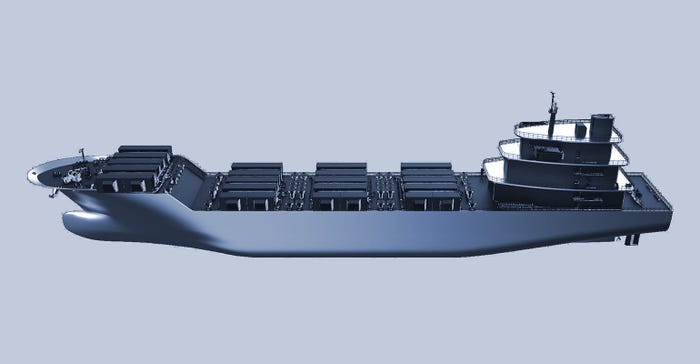
Moreover, areas with high potential for renewable energy generation are often distant from urban areas and regions with high power demand. Strengthening transmission infrastructure becomes essential in such cases. Given the current energy density of lithium-ion battery cells, the Battery Tanker is an optimal solution for short-distance maritime power transmission from land to land, complementing existing inter-regional grid transmission lines. For instance, in Japan, a Battery Tanker can carry power from regions with high renewable energy supply potential, such as Kyushu and Hokkaido, to high-demand areas of Honshu or for inter-island power transmission.
Battery Tankers will establish new power transmission networks across the sea, promoting renewable energy storage, supply, and utilization. As the energy density of batteries improves and their cost decreases, it is expected that longer-distance maritime transmission from offshore wind power plants to the land will become feasible.
Battery Tankers offer a practical solution, especially in Japan, which is prone to earthquakes and has deep-sea surroundings. The ship-based solution resolves issues such as extended downtime from undersea cable malfunctions and repairs and the high costs associated with ultra-high voltage connections and substations. As a result, the Battery Tankers will enable the installation of offshore wind farms in areas where undersea cable deployment was once challenging. Using maritime power transmission via Battery Tankers can address various challenges associated with offshore wind power, not only in Japan but also contribute to the widespread adoption of renewable energy worldwide.
About the Author(s)
You May Also Like


